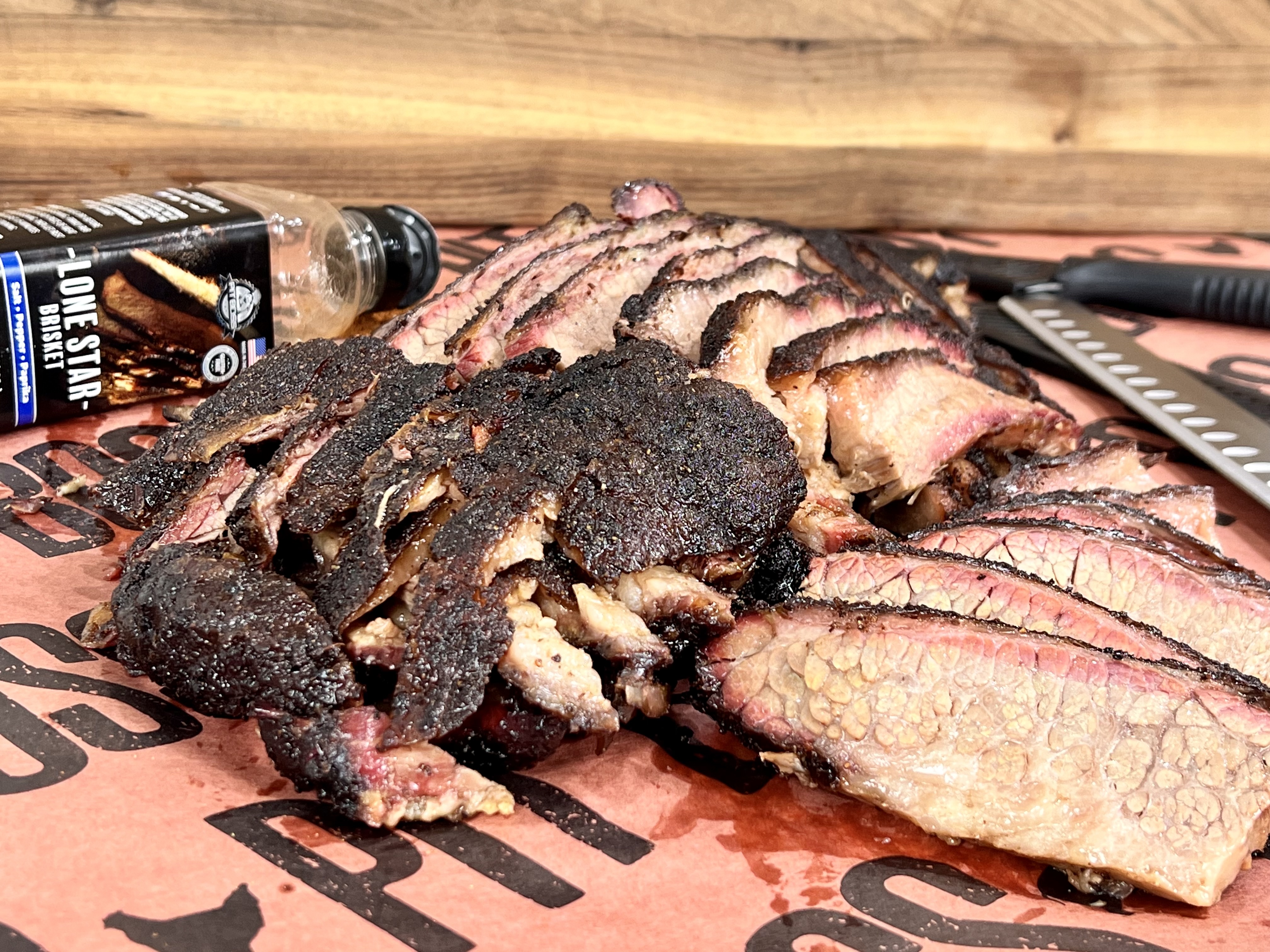
Chef Shaun's Brisket
Category
BBQ
Smoke
Beef
Servings
5
Prep Time
30 minutes
Cook Time
12-18 hours
Take your backyard barbecue to the next level with this incredible brisket recipe! Injecting it with beef stock helps the brisket stay juicy and delicious.
Author:
Shaun O'Neale @chefshaunoneale
Shaun O'Neale @chefshaunoneale

Ingredients
- 1 whole brisket (Cook time will vary. Recipe based on a 16 lb. brisket)
- 2 cups high quality beef stock
Special Tools
Directions
- Preheat your Pit Boss® Grill to 250°F.
- Trim the hard fats away from the brisket. These hard fats will not render no matter how long you cook the brisket. Trim the fat on the top of the brisket leaving about 1/4 in. layer of fat remaining.
- Inject the beef stock throughout the brisket using the Pit Boss Marinade Injector.
- Season the brisket liberally with the Pit Boss Lonestar Brisket Rub.
- Place a foil pan about half full of water on the bottom level of your pellet grill. I recommend the Pit Boss Laredo 1000.
- Place the brisket on the second level (you will likely have to remove the top rack). Cook the brisket until you make it through “the stall” which occurs in large cuts of meat as they are smoking. You will experience several hours of time where the brisket does not increase in temperature much or at all. This is normal and happens with every brisket. The stall generally happens between 160 and 180°F.
- Once you have passed the stall, remove the meat from the smoker and wrap in butcher’s paper. Return the brisket to the smoker and continue cooking until you have reached an internal temperature of 202°F.
- Remove the finished brisket from the smoker and place in a Styrofoam cooler to rest for 4 hours.
- Unwrap and separate the flat from the point. Slice each muscle diagonally across the grain, and enjoy!
RECOMMENDED PRODUCTS
Recipe NoteTip: Be careful, you can ruin a perfectly cooked brisket by slicing it the wrong way. Make note of which way the grain of the meat runs before cooking. Every animal is different, so it’s good to always know which way the grain is running.